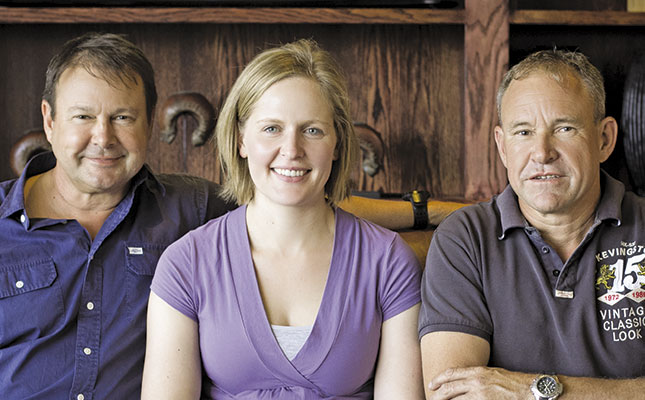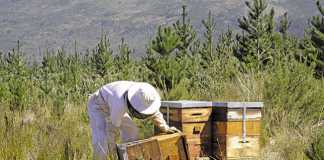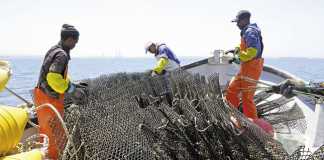
Photo: Courtesy of Vrede en Lust
Over the past decade, South African wine exports have increased greatly, while local sales have remained almost stagnant. But Vrede en Lust has bucked this trend. Starting in 2008, the wine estate has focused on increasing on-farm wine sales and selling wine directly to the end user.
READ:Preparing to meet evolving consumer demands
Thanks to ingenious marketing, Vrede en Lust now sells 85% of its wine in South Africa. A remarkable 68% of these sales are made directly from the farm, where the emphasis is not just on the wine but in creating a memorable experience for buyers. One of Vrede en Lust’s most successful ventures has been its wine club. Members enjoy an array of benefits, including discounts on wine and accommodation on the farm.
In return, they buy a selection of 12 wines bi-annually or every quarter, depending on the level of membership at the time. In short, the Buys brothers and winemaker Susan Erasmus have taken one of the country’s oldest wine estates into the 21st century, blending modern business practices with a heritage of quality wines. Vrede en Lust was bought by Dana Buys in 1996 and is run in partnership with his brother Etienne, who oversees the vineyards and winery.
Since 1998, most of the vineyards have been replanted and additional land has been purchased to expand the business. Susan Erasmus joined the team eight years ago. Named South Africa’s Woman Winemaker of the Year in 2007, she believes in “respecting the fruit” and giving the grapes a “platform to perform and speak for themselves”.
“To ensure that we always have something new, exclusive and exciting to offer our club members I produce what we call the Artisan Range,” says Susan. “With this range we’re free to experiment and try new things that help us discover the full potential of the different cultivars from the different properties that make up the estate.”
Vrede en Lust’s other offerings include the premium range for everyday enjoyment; the super-premium range, representing top varietal wines, along with one white blend; and the estate’s carefully selected flagship wines.
Climate, soil and surroundings
The estate itself comprises a long, narrow piece of land that runs up from the R45 connecting Paarl and Franschhoek, to the slopes of the Simonsberg. The climate is warm, and several premium red wine varieties are produced in the area. Approximately 36ha of Vrede en Lust’s 55ha is currently under vines. Ricton Farm, purchased more recently and lying only 2km away, adds a further 123ha, with 30ha under vines at present and the capacity to plant another 30ha in the future.
The soils here are a uniform, sandy form of decomposed granite on top of clay, and well-drained, while the vineyards are fairly flat, sloping gently to the Berg River and the east, says Etienne. To further expand their business, and increase their own supply of top quality white grape varieties in particular, the brothers invested in the 90ha Casey’s Ridge in the cool Elgin region in 2005. The apple orchards have been taken out and 54ha planted to vineyards.
The soils here are very different to those found at Vrede en Lust and Ricton, and consist of Table Mountain sandstone and gravel shale.
Building the winery
It was only after deregulation, a process that began in the early 1990s, that South African wine grape farmers really started producing estate wines under private brand names. “Our initial plan was to build a 150t to 200t cellar, but the dynamics in the South African wine industry were changing fast,” explains Etienne.
“We realised it would be better to have a bigger winery on the farm to increase our capacity for value adding.”
It was obvious that this was becoming increasingly important. In the late 1990s, wine grape farmers earned record prices for their grapes (up to R8 000/t for red grapes), but in the early years of the new century, the wine industry went into crisis and prices plummeted. As a result, it made more sense to add value on the farm by producing wine under one’s own label than selling the grapes to cooperative-type producer cellars.
The Vrede en Lust winery was designed with the assistance of legendary Nederburg winemaker Günter Brözel. The design phase took two years and the cellar was built in less than a year. It produced its first vintage in 2002.
Today, nearly 500 000l of wine, from 750t of grapes, flow from the estate. Of this, 290 000l is bottled under the Vrede en Lust label.
Building a better brand
It is incredibly difficult for a new brand to become profitable in the wine industry, says Etienne. “In our experience, it can take anything from 15 to 20 years to really establish a new brand, which in all honesty is a lot longer than we anticipated it would take when we decided to launch our own brand.” The biggest challenge, he adds, is to ensure that one’s brand stands out amid all the others on offer. Making this especially difficult is the fact that the wine-drinking public is a particularly “challenging bunch”.
“There are so many very good wines in South Africa that it’s really difficult to be better than your neighbour, and this means you cannot simply rely on quality as a unique selling point. In fact, quality should be a given,” he says.
Quality is at any rate a difficult attribute to use as a marketing tool, because wine drinkers don’t always know as much as they think, says Etienne. Few wine drinkers in South Africa are able to fully appreciate the subtle nuances that set great wines apart from the ones that are merely good or good value for money.
“It’s far more effective to sell an experience because in the wine drinker’s mind a good experience equates to a remarkable wine,” he explains.
Creating that unique experience
It is for this reason that the Buys family has taken so much care to develop their farm into a singularly elegant wine experience. “On the farm, we have absolute control over how our product is perceived,” says Etienne. “When guests taste our wines in our tasting venue, we’re able to create the environment with which we want our wines to be associated.
“We can also make sure that the wine is served at the correct temperature and in appropriate stemware.
“If you do everything right, your tasting room becomes your best marketing tool.
“We want each visitor to Vrede en Lust to enjoy a truly authentic wine farm experience and unique South African hospitality.”
At Vrede en Lust, hostesses wear floor-length red dresses and the spacious, yet inviting tasting venue has deep leather couches. According to the team, this evokes instant oenophilia as you relax and sample Vrede en Lust’s range of wines .
Then there’s the bistro that serves good, wholesome seasonal food, while accommodation is offered in the historical Manor House and Jonkmanshuis. The Vrede en Lust experience is comfortably modern, but unmistakably reminiscent of South Africa’s proud, three-century-old wine heritage.
Industry challenges
“In the wine industry, when you consult five different experts, there’s a good likelihood that you will receive five different opinions,” says Etienne. “For a new entrant in the industry it soon becomes very difficult to discern between the advice you should heed and the advice you should ignore.”
Another major challenge is finding reliable and skilled labour, with Monday absenteeism a major problem. “In this business, having to deal with a unreliable workforce can be a huge drawback,” says Etienne. “Harvesting grapes at exactly the right time is of the utmost importance in the production of premium wine. If the grapes need to be picked on Monday and harvesting cannot take place because workers just don’t show up for work, the price you pay in terms of quality for having to wait even one day to harvest can make the difference between producing a good wine and producing an exceptional wine.”
The alternative, says Etienne, is to convert to a farm management system that will allow mechanical harvesting.
But this is not an option they will easily entertain, because both Dana and Etienne Buys realise this could have a devastating impact on the families who rely on an income from work on their farms.
Phone Vrede en Lust at 021 874 1611, or email [email protected]. Website: www.vnl.co.za.
This article was originally published in the 9 May 2014 issue of Farmer’s Weekly.













